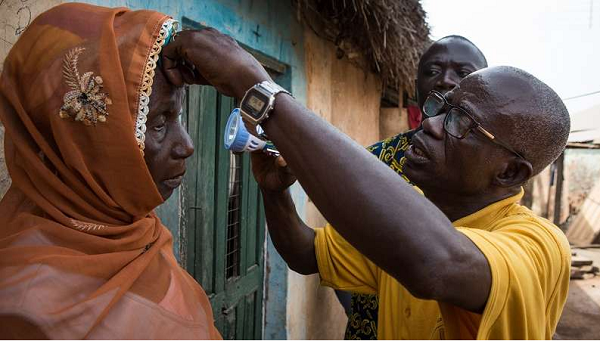
Elimination of Trachoma should spur us on
The World Health Organisation (WHO) has announced that Ghana has been recognised to be one of the first to eliminate trachoma, the leading infectious cause of blindness worldwide.
Ghana’s efforts at eliminating trachoma, which were intensified in 2000, led to the Ministry of Health (MoH) and the Ghana Health Service (GHS) setting up a national trachoma elimination programme which implemented the WHO-recommended elimination strategy, SAFE, which comprised surgery for trichiasis, antibiotics to clear infection, facial cleanliness and environmental improvement to reduce transmission.
Facial cleanliness was promoted through community events such as drama, school health education programmes, radio messages, as well as radio clubs. There was also an environmental improvement programme, coordinated by the Community Water and Sanitation Agency (CWSA), and trichiasis surgery, which as part of the measures, was also provided at no cost.
It is obvious that the government and allied health organisations have, over the years, contributed to the development of health infrastructure, material and human resource for the health sector, but present conditions at the various health facilities are not indicators we are proud of as a country.
In a nutshell, we cannot sweep the problems facing the health sector under the carpet because of the joy over the trachoma elimination.
The Daily Graphic would like to encourage all in the health sector to take a cue from the steps taken 18 years ago by the MoH and the GHS towards eliminating trachoma, by coordinating their activities, as well as streamlining them, while liaising with the government to do away with overlaps and project duplications.
This is
It is in this vein that we also urge the government to build on achievements, such as the one recognised by the WHO, so that we make progress not only with the elimination of ailments such as trachoma, guinea worm and other communicable diseases but also improve upon general healthcare delivery across the country.
The Daily Graphic joins stakeholders in the health sector and
Such international recognition of achievements, instead of getting into our heads, must rather spur us on to go the extra mile by investing more in the health sector.
The Daily Graphic believes that we have the men and the women who have what it takes to ensure the success of state programmes and projects; all we need to do is coordinate efforts for the nation to rise and be seen among the top in the world.
